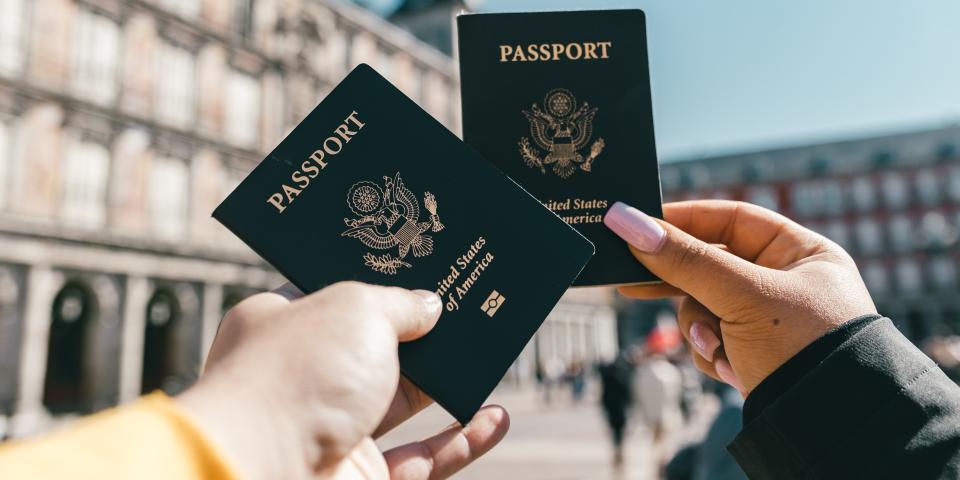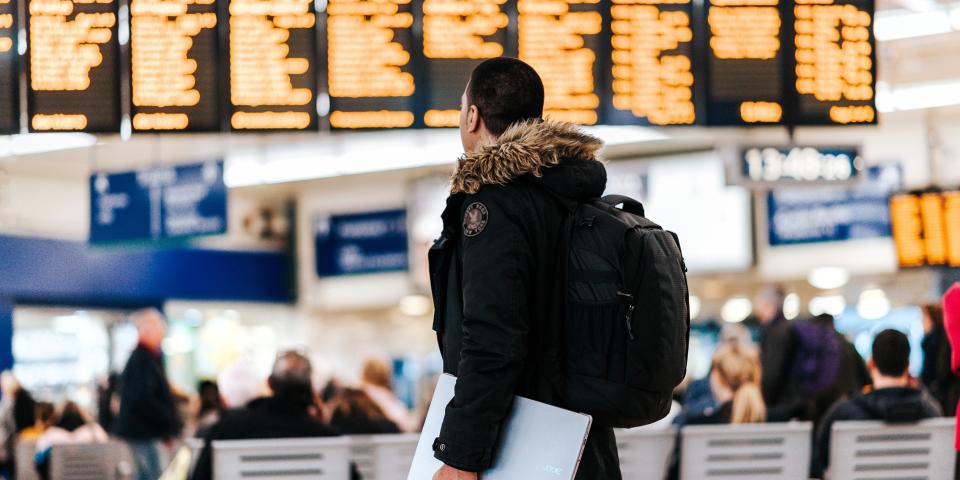Airport security is one of the most challenging parts of traveling for many students, especially those globetrotting to one of the SAF’s many host universities spanning 25 countries. It can be frustrating and disorienting to wait in long lines while dealing with rules that seem to be constantly revised depending on where you’re going.
Plan and prepare wisely if you want a more straightforward airport experience on your next trip. It also helps if your checked and carry-on bags are well-organized and that you know the TSA's regulations for what's allowed. If you need help figuring out where to begin, check out our study abroad packing list for suggestions. Here are some ideas to make trekking through an airport less uncomfortable:
Leave Early

Even though TSA doesn't give exact instructions on when to get to the airport, you should get there two hours before a domestic flight and three hours before an international flight. Check your itinerary online or use the airline app to monitor any delays or changes in the schedule. Holidays and weekends will have even higher passenger volumes than mid-week flights, so getting to the airport even earlier is smart.
Additionally, plan for airport traffic, parking, shuttles, checking in with the airline, getting your boarding pass, and navigating security.
Keep the Proper Documentation On Hand

Remember that all airports require a government-issued picture ID for travel, so be sure to have your passport on hand at all times. Stow it in your carry-on rather than the bottom of your bag, as you'll likely have to show it to a customs agent to enter the security area.
Before you book your international flight, double-check that your passport is valid for at least six months beyond your intended destination's expiration date. Some nations have strict regulations about passport validity.
Be Prepared For Security

After checking in your luggage at the airline kiosk, you'll go through security to the airport departure gates. There will probably be a long line to go through the metal scanners and have your bags inspected. You'll likely need to take off your shoes, belts, earrings, oversized coats, and certain items in your bags to put in the screening containers. Laptops and other electronic gadgets must be removed from your baggage and placed in a separate plastic container for X-ray inspection. Some countries allow you to have only a small amount of lotion or toothpaste on hand, although the restrictions differ by location.
Wear Comfortable Clothing

Choose comfortable and practical clothing when preparing what to wear on your trip. Refrain from wearing attire that might cause security problems or cause a delay when moving through the line. Avoid hard-to-wear shoes, jeans with metal buttons or snaps, and bulky jewelry.
Be Kind and Cooperative

Being welcoming, accommodating, and patient may go a long way when dealing with others at the airport. No one enjoys going through the security procedure, but working with the personnel will help you and everyone else make it quicker. Maintain a relaxed, helpful attitude and be ready to keep the line moving.
Check-In Online

Most airlines allow passengers to check in online using their apps about 24 hours in advance. This feature often enables travelers to choose seats and print boarding passes. Many airline apps also allow you to pay for non-complimentary checked baggage before arriving at the kiosk.
By bypassing the in-person check-in procedure, you could save a lot of time on your travel day. Some airports even have distinct lines for baggage drop-off, allowing you to dodge the check-in wait completely.
Things Not To Bring

Avoid bringing in produce, live animals, animal products, or flammable liquids. Guns, weapons, toxic chemicals, and anything else considered unlawful are handed over to local law enforcement. The disposal of prohibited liquids is done without delay. These items will almost certainly be confiscated and stir up trouble, making it not worth the hassle.
Enroll in Global Entry

Global Entry expedites your trip when you go through customs in the US. It usually costs a fee to enroll, and passengers will need to go through an interview. This program is open to residents and nationals of the United States and a few other qualifying countries listed on their website.
Final Thoughts
Standing in lengthy airport security lines is never enjoyable, particularly if you'd rather spend the additional time resting in the airport lounge before rushing to your gate. Fortunately, with little planning, passing through airport security can be faster and easier! Then, all that's left is to decide how to maximize your time while on the flight.
